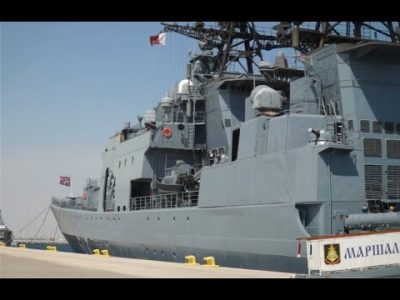Last Updated on 04/22/2020 by OTC
As we pass near a naval ship, we hear a shrill voice echoing in the air sometimes. Like many of the naval customs, this is a curious issue for civilians. Because a well-dressed sailor, which is expected to carry a gun or a rifle, holding a small whistle and blowing it when a high-rank officer is on board. What is that whistle? Why is it used? Let’s answer these questions to quench your curiosity.
A bosun’s whistle is a pipe or a non-diaphragm type whistle used on naval ships by a boatswain. It’s also called as boatswain’s call, boatswain’s pipe or bosun’s pipe.
It was first used in the time of the Crusaders (1262) and Romans, in the navies of the Mediterranean countries in the 13th and 14th centuries to inform the rowers about the sudden attacks that may come to their ships. Voice orders could not be heard over the sounds of the sea, wind noise and the sounds of battle, so, bosun’s whistle had been used to help the crew understand the orders. It is now used in traditional bugle calls such as Evening Colors/Sunset, and in other ceremonies in most modern navies. It is sometimes accompanied by other auditive features such as ruffles and flourishes, voice commands and announcements, or even a gun salute.

Due to the special angled structure of the bosun’s whistle, the high-pitched sound can be heard easily among many noise that occurs on the deck, even in stormy weather.
According to British maritime standards, the current form of bosun’s whistle was designed in 1870, it was patented and started to be used in ships to announce standard orders to personnel. The bosun’s whistle made of brass or lead is used with 99 cm (39 inches) long-chain / chain knitted hand finer. Dimensions of standard whistle; Its length is 12.7 cm (5 inches) and its weight is 45 grams with chain.

What is it used for currently?
- Pipe aboard: Flag-rank officers or an important guest is boarding a Navy ship. This is part of a ceremony called “manning the side” which includes a party of sailors known as “side boys”. It has its origins in the need to hoist visiting senior officers aboard using a bosun’s chair when the weather was too rough for the use of ladders.
- Funerals: When the body of a person entitled to honours in their lifetime is taken aboard a Navy ship, the same ceremony is observed.
- Flag Ceremony: While making flag hoisting up and down ceremony bosun’s whistle is used.
- Announcements: Before making and important announcement aboard the ship it’s used to take attention of the crew.

Here are some of the commands that are passed with the help of a bosun’s pipe in different countries’ navies.
- Haul: The most basic of calls. Crews of warships were not allowed to sing work songs or shanties, so the pipe coordinated the sailors. The low note was for the pause and preparatory; the high for pulling on the line.
- The Side or Away Galley: Descends from the tradition of hoisting officers aboard ship in a chair. It is a combination of haul, and then a command to lower. This call remains in use as an honour given to officers when embarking or disembarking.
- Away Boats: Used to order a ship’s boats to leave the ship’s side.
- Call the Boatswain’s Mates: The boatswain’s gang to report.
- All Hands on Deck: Crews were split into three (or earlier, two) rotating watches that stood for two to four hours at a time. This call signals the entire crew to assemble on deck.
- Word to be Passed: Command for silence, an order to follow.
- Pipe Down: Dismissal of all the crew not on watch.
Sweepers. End of the workday. Ostensibly sailors would “sweep up” prior to departure in preparation for the following day. - Pipe to any meal: Pipe All Hands, followed by long Heave Around (Mess gear), and long Pipe Down.
- Still: Used to call the crew to attention. This would be done, for example, when two warships meet, the still being piped as the junior ship salutes the senior ship (the seniority of a warship is the seniority of her captain); a less common alternative to the still being piped is a bugle call.
- Carry On: Used after the still, to dismiss the crew back to their duties.
- General Call: Piped before an announcement.
Officer of the Day: Call the Officer of the Day to the Gangway.
The general explanation of the bosun’s whistle and the examples of different commands are shown at the video below.
If you are a member of a navy, you are a member of a universal community. Though having different flags hoisted up, many customs are the same at the naval ships. Bosun’s whistle is one of those old-school customs used in the normal life-cycle. Because navies live with the customs, maybe that makes navies special.














Comments